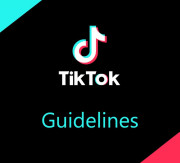Tips to help you optimize your Adsense loading
Use a Responsive Theme:
A responsive theme is designed to automatically adjust the layout of your website to fit the screen size of the device being used to access it. This ensures that your site looks great and loads quickly on any device, whether it's a desktop computer, tablet, or smartphone.
Optimize Images:
Images are often the biggest culprit when it is comes to slow-loading pages. To optimize your images, use a tool like Photoshop or GIMP to compress them before uploading them to your website. You can also use a plugin like Smush to automatically compress images as they're uploaded.
Minimize HTTP Requests:
Each time a page on your website is loaded, it sends requests to the server for various files such as images, stylesheets, and scripts. The more requests and that are made, the longer it will be take for the page to load. To minimize the number of HTTP requests, combine multiple files into a single file where possible, and use a content delivery network (CDN) to serve static files.
Use Lazy Loading:
Lazy loading is a technique that delays the loading of the images and other elements until they're needed. This helps to reduce the initial load time of a page and improve the overall user experience. You can use a plugin like Lazy Load and WP Smush to implement lazy loading on your website.
Enable Caching:
Caching involves storing frequently accessed files such as images, stylesheets, and scripts on the user's device or on a server closer to them. This reduces the number of requests that need to be made to the server, resulting in faster page load times. You can use a caching plugin like WP Super Cache or W3 Total Cache to enable caching on your website.
Minify CSS and JavaScript:
Minification involves removing unnecessary characters such as white space and comments, and line breaks from CSS and JavaScript files. This reduces of the file size and makes them load faster. You can use a plugin like Autoptimize to automatically minify your CSS and JavaScript files.
Optimize Ad Placements:
Finally, optimizing your ad placements is critical to improving the overall performance of your Adsense ads. Make sure that your ads are placed in prominent locations where they're likely to be seen by your visitors. Avoid placing too many ads on a single page as this can slow down the loading time and negatively impact the user experience. You can also experiment with different ad formats and sizes to see which ones perform best on your website. In summary, Adsense loading is an important aspect of website optimization that can significantly improve the user experience and drive more traffic to your site. By implementing the above tips, you can ensure that your website loads quickly and smoothly, making it more appealing to visitors and ultimately improving your overall revenue through Adsense.















